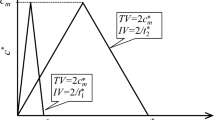Abstract
Hydrodynamic models of differing scale and complexity were used to estimate spatial patterns of effluent concentration in discharge plumes in the River Esk and the Lower Tees Estuary. The output from the Tees model was used, in conjunction with measurements of toxicity determined in short-term oyster embryo tests, to predict contours/zones of toxicity in the estuary associated with effluent discharges from four chemical processing sites. One of the discharges also combined the input from a municipal sewage treatment works. The models appeared to be effective in predicting patterns of dilution and dispersion of the effluent discharges in the respective receiving environments. Confirmation of the predictive capabilities of the Tees model was achieved by comparing predicted and measured toxicity in different regions of the plumes associated with the four discharges. Differences between predicted and measured toxicity for two of the four discharges were explicable in terms of failure to take account of the effects of real-time wind conditions when test samples were collected or overlap of adjacent discharge plumes. Suggested refinements to the models and measurement of effluent toxicity would further enhance the utility of this approach for determining the extent and significance of the effects of effluent discharges in receiving environments.
Similar content being viewed by others
References
Fischer, H.B., Koh, R.C.Y., Imberer, I. and Brooks, N.H. (1979). Mixing in Inland & Coastal Waters. Academic Press, ISBN 0122581504.
Girling, A.E., Tattersfield, L., Mitchell, G.C., Crossland, N.O., Pascoe, D., Blockwell, S.J., Maund, S.J., Taylor, E.J., Wenzel, A., Janssen, C.R. and JÜttner, I. (2000). Derivation of predicted no-effect concentrations for lindane, 3,4-dichloroaniline, atrazine and copper. Ecotoxicol. Environ. Safety 46, 148–62.
Hutchings, M., Johnson, I., Hayes, E., Girling, A., Thain, J., Thomas, K., Benstead, R., Whale, G., Wordon, J., Maddox, R. and Chown, P. (2004). Toxicity reduction evaluation, toxicity identification evaluation and toxicity tracking in direct toxicity assessment. Ecotoxicology 13, 475–84.
Johnson, I., Whitehouse, P., Hutchings, M., Benstead, R. and Thain, J. (2004). Evaluation of rapid bioassay methods for screening effluents in direct toxicity assessment. Ecotoxicology-this volume.
Lin, L. and Falconer, R.A.F. (1997). Tidal flow and transport modelling using ULTIMATE QUICKEST Scheme. J. Hydraulic Eng. 123(4), 303–14.
Power, E.A. and Boumphrey, R.S. (2004). International trends in bioassay use for effluent management. Ecotoxicology 13, 377–98.
Riddle, A.M. (1998). Plume Modelling System for the Tees Estuary. Brixham Environmental Laboratory Report BL5901/B, March 1998.
Scroggins, R., van Aggelen, G. and Schroeder, J. (2002). Monitoring sublethal toxicity in effluent under the metal mining EEM program. Water Qual. Res. J. Can. 37, 279–94.
Author information
Authors and Affiliations
Corresponding author
Rights and permissions
About this article
Cite this article
Girling, A.E., Riddle, A.M., Mitchell, G.M. et al. Estimating Spatial Patterns of Effluent Exposure Concentrations in Direct Toxicity Assessment Studies. Ecotoxicology 13, 449–461 (2004). https://doi.org/10.1023/B:ECTX.0000035295.97557.6b
Issue Date:
DOI: https://doi.org/10.1023/B:ECTX.0000035295.97557.6b




